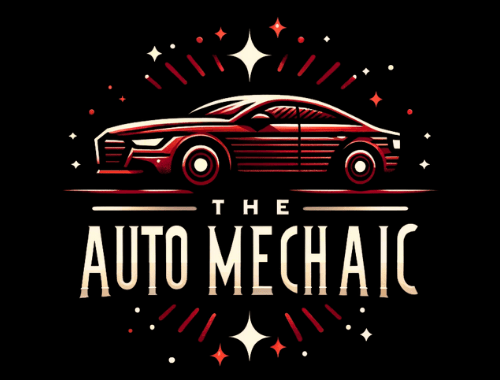So, how do you jack up a C4 Corvette? The steps are:
- Place the car in a safe place.
- Loosen the nuts of the rear/front area where you want to lift.
- Place wheel chocks behind the wheels.
- Find the lifting points and place the hydraulic floor jack under them.
- Place the jack stands under the lifting points and lower the car.
How To Jack Up A C4 Corvette? Step By Step
There are several jacking points in your C4 Corvette. You must jack it up from those points using a hydraulic floor jack; jack stands, wheel chocks, and a lug wrench. So, once you have these items in your hands, let’s move forward to the steps:
- Step 1: First, park your Corvette on a level and solid surface. Jacking up on uneven ground will disrupt the process and make you prone to accidents. It’s better if the area is not crowded.
- Step 2: Now, you need to engage the parking brake to keep the car halted in place. This will prevent accidents.
- Step 3: Depending on the area you are trying to jack up (rear/front), you need to loosen the nuts. If you are jacking up the rear side, loosen the front wheel lug nuts. And in the case of the front side, loosen the lug nuts on the rear wheels.
- Step 4: To prevent the car from moving, you must place the wheel chocks behind the wheels that are not being lifted. For example, if you are lifting the front of the car, you must place the wheel chocks in the rear wheels.
- Step 5: Now, find the lifting points depending on the side you will lift. Avoid lifting under the frame, body panels, or any other vulnerable areas.
- Step 6: At this point, you have to use the hydraulic floor jack under the appropriate lifting point and carefully pump the handle to start lifting the car. Lift the car just sufficiently to clear the ground.
- Step 7: Once the car is lifted, place the jack stands under the lifting points. Slowly lower the car onto the jack stands. Before doing so, ensure the stands are stable enough to hold the car properly.
- Step 8: Once the car is securely on the jack stands, finish lifting it off the floor jack and carefully remove the jack from underneath it.
Where Are The Correct C4 Corvette Jacking Points?
Before jacking up the C4 Corvette, you need to understand the jacking points. This ensures your vehicle is safe and protected from unwanted injuries. Here are the jacking points of your C4 Corvette:
Front Jacking Points:
- Front Crossmember: This sturdy and reinforced part of the frame is located just behind the front bumper. It’s a common jacking point for lifting the front of the vehicle.
- Front Frame Rails: Look for reinforced sections along the frame rails just behind the front wheels. These places are designed to support the car’s weight during jacking.
Rear Jacking Points:
- Rear Differential: The rear differential housing is a stable and strong jacking point for lifting the rear of the C4 Corvette.
- Rear Frame Rails: Similar to the front, reinforced sections along the rear frame rails are near the rear wheels.
Quick Jack Placement
You need to ensure proper placement while using Quick Jacks to lift a vehicle like a C4 Corvette. The placement has some rules that you need to keep in mind. It differs on the position you are voting for, so here is a guideline for both front and rear placement:
Front Placement:
- Position the quick jacks on each side of the front.
- Look for reinforced lifting points near the front suspension components. You can also use frame rails as your lifting points.
Rear Placement:
- Place the quick jacks on each side of the rear of the vehicle.
- Locate the recommended lifting points near the rear suspension components, such as the front.
When Do You Need To Jack Up Your C4 Corvette?
In certain conditions, especially when you need to inspect underneath your vehicle and do maintenance, jacking up is necessary. Here comes a few conditions where jacking up might be the right thing to do:
- Routine Maintenance: Tasks such as oil changes, fluid checks, and brake inspections may require lifting the vehicle to access the undercarriage and components. Thus, you might need to do it once a week to ensure your vehicle is in optimal condition.
- Tire Changes: You must lift your vehicle when you are about to change your tires. Whether you are changing rear or front tires, lifting the vehicle is necessary to access the wheels.
- Internal Work: Lifting the car can provide better access to suspension components, such as shocks, struts, or control arms, while inspecting or replacing them. Thus, mechanics often jack up your vehicle as the first step while doing suspension work. The suspension and components like the transmission, driveshaft, or differential may require lifting the car.
- Visual Inspections: For inspections like rust, damage, or leaks, you might need to lift your vehicle for a better view. This makes the whole repair process easier, and you can even lift your vehicle to customize and install new parts.
READ NEXT: How To Jack Up A C5 Corvette
Further Explanations Ahead
1. Can you lift a C4 Corvette with a jack?
Yes, you can lift a C4 Corvette using a jack, but it must be done with caution and using proper jacking points to ensure safety.
2. Where do you jack up a C4?
You can jack up a C4 Corvette from its reinforced front and rear frame rails. You will find the areas mentioned and drawn in the car’s manual.
3. What is the purpose of a jack in lifting a car?
A car jack is used to raise vehicles for maintenance, repairs, and tire changes. It provides access to undercarriage components and allows secure support with jack stands.
4. Is it safe to jack up a car?
Jacking up a car can be safe if done properly. But you need to use proper jacking points, quality equipment, and follow safety protocols. Jack stands to provide stability while working under a lifted car.
Bottom Line
There might be times when you need to jack up your C4 Corvette all by yourself. If you don’t find a mechanic nearby, knowing how to jack up a C4 Corvette will help you. However, keep in mind that you need to ensure that the jacks are placed in the right areas to avoid accidents.

Bruce William is a professional content writer and vehicle engineer with extensive car maintenance and repair knowledge. His expertise spans all vehicle parts, offering practical solutions for various automotive issues. Bruce provides valuable insights through his website articles to help readers maintain their cars for optimal performance and longevity.

